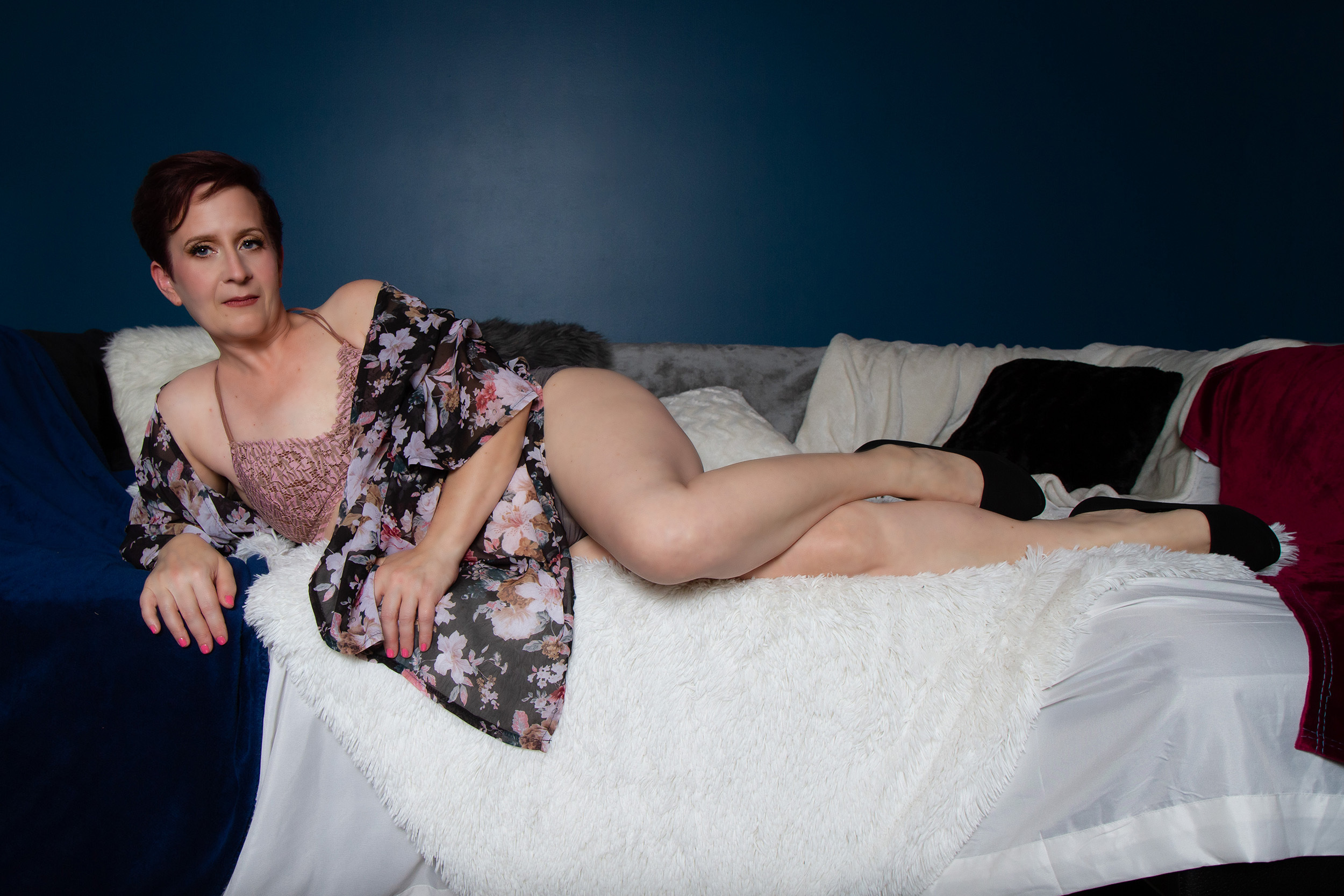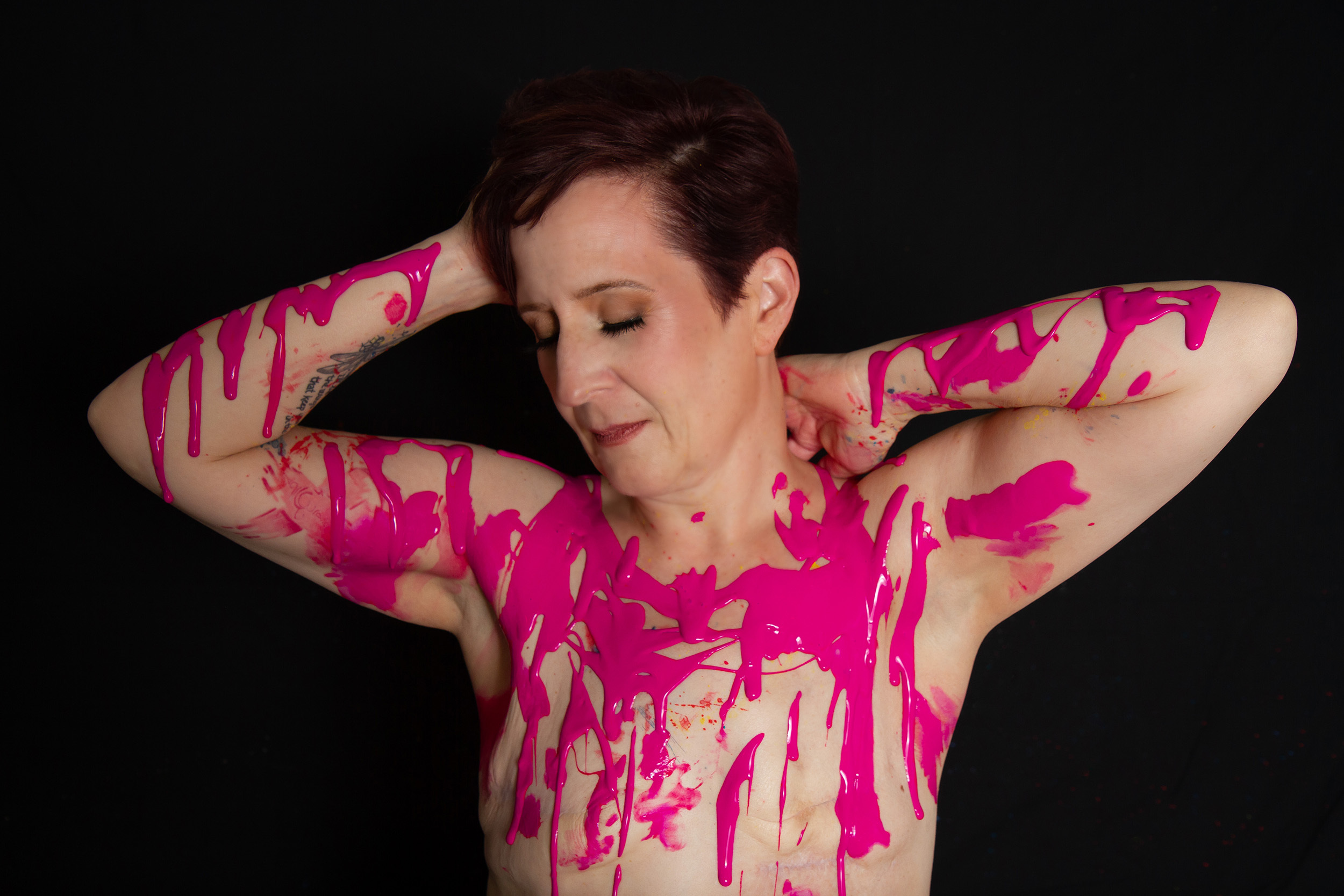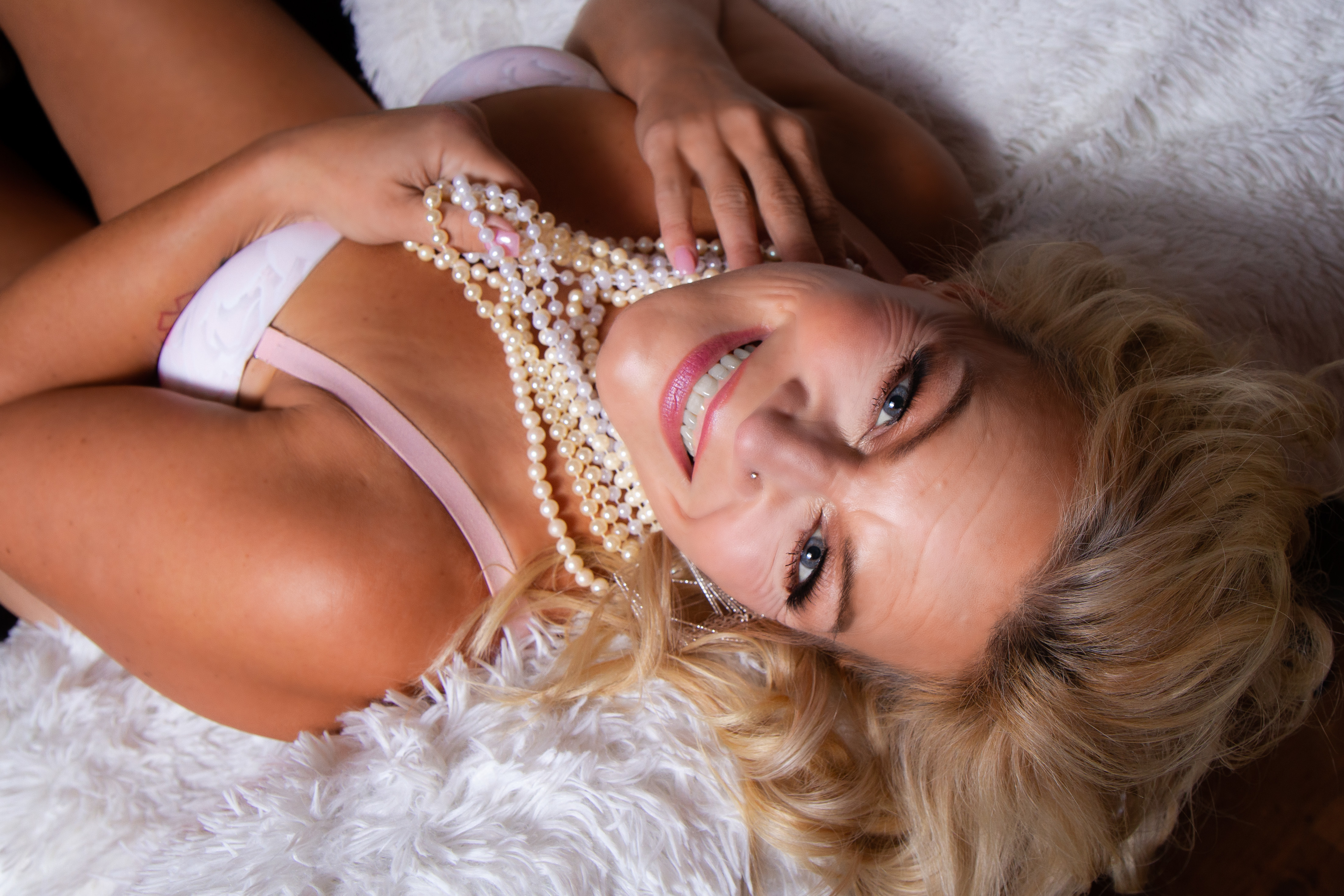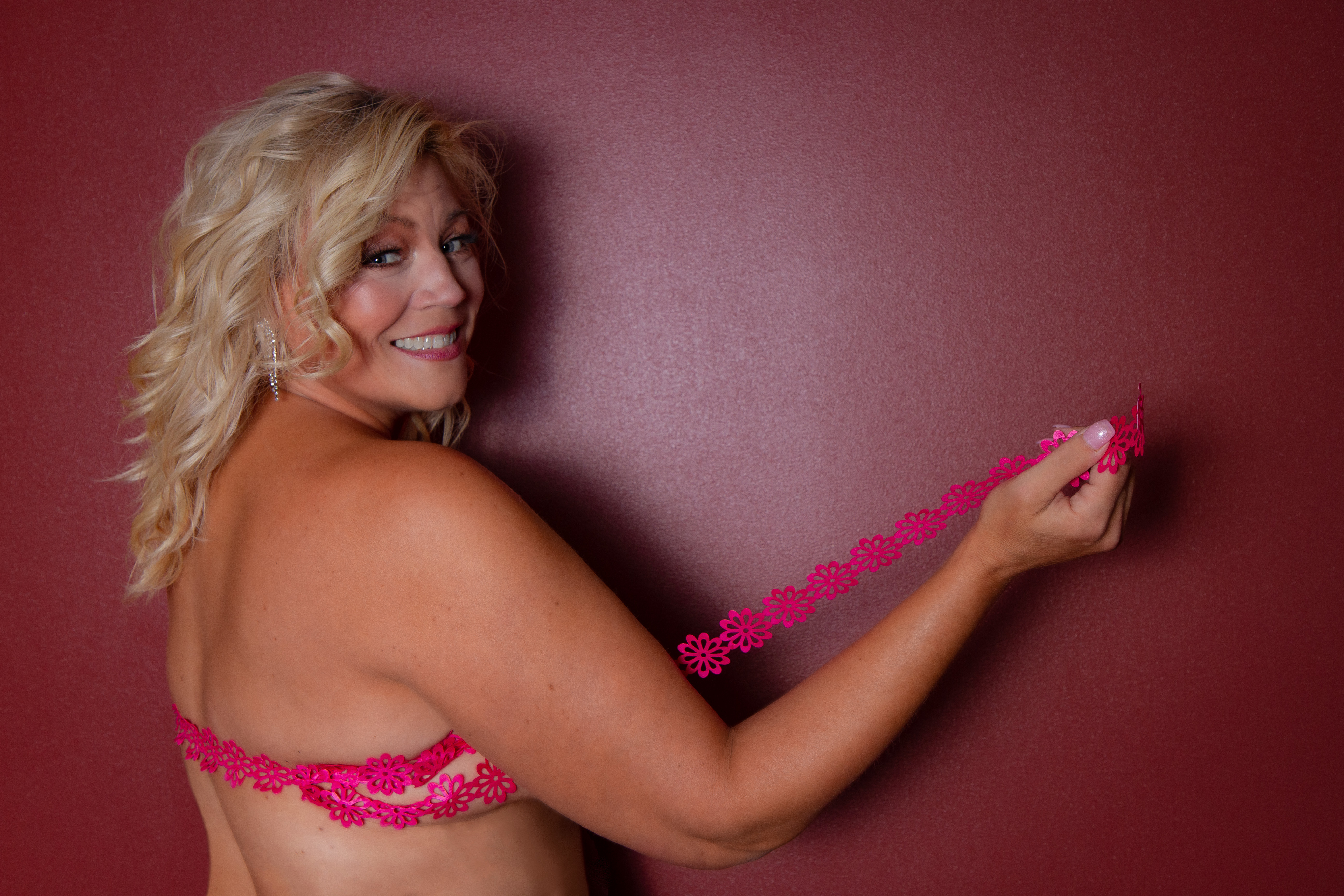October 24, 2020
Pam Brace has photographed weddings, graduations — even roller derby — but she eventually settled on boudoir shots as where her passion lies.
“Boudoir is … all about making women feel good about themselves and showing them a part of themselves that they don’t necessarily love already,” said the owner of the Saskatoon-based Roses and Scars Photography.
Brace said she’s tried to make her business inclusive to all body types. Its name alludes to finding beauty in your scars as an ode to your journey, something Brace knows well having broken both of her legs.
When October — breast cancer awareness month — was approaching, she began to ruminate on how women who have undergone mastectomies must feel post-surgery.
“I want to show them that part of them still exists — they are still sexual; that they are still attractive and I want to empower these women that just because they’ve gone through this doesn’t make them any less of a woman,” Brace said.
She set up boudoir shoots with three women who have had trying breast cancer and breast reconstructive experiences, and has since used those photos to promote fundraising for the Pink Wig Foundation, which supports women undergoing treatment.
Brace said she got just as much out of the experience as her subjects did.
“If that were me in that position I don’t know if I could have handled it and come out the other side of it as strongly as they have. It really takes somebody really incredible to go through what these women have been through and still want to put themselves out there in the way they have with me.”
Here’s how dealing with breast cancer affected their sense of self as women, and how they've come to re-establish their confidence since having mastectomies and follow-up procedures, as told to Brace and the CBC’s Natascia Lypny.
Vicki Cassidy
Vicki Cassidy was a 44-year-old mother of two going through a divorce when she was diagnosed with breast cancer.
The Saskatoon woman had a mastectomy on her left side in 2017, then a preventative one on her right side two years later. Between those procedures, her ovaries were removed. After those procedures, along with a preventative hysterectomy she had in 2014 after getting cervical cancer, she “no longer felt like a whole person.”
She had expanders placed in her chest to prepare for breast reconstruction surgery, but experienced complications on one side and had to have them removed on March 12 — the day of the first COVID-19 case in Saskatchewan. She is now “in limbo” with no sense of when she’ll be able to get her surgeries.

“It had a huge impact but I didn’t quite realize how much more feminine I felt with breasts even though I tried to hide them. For me losing the first one was probably the most traumatic thing I think I’ve ever had to go through.
“I didn’t realize how much I based myself on my actual chest and how much other people seemed to base who you are on the size of your chest. It’s probably the thing I noticed the most — that people all of a sudden were uncomfortable with how you look and were uncomfortable talking to you about the fact that you now had a breast removed.”
![‘I’m pretty shy about my body as it is — always have been. You know, the way I was raised and these weird little beliefs that popped into my head. [The photoshoot] was pretty nerve-racking, but it was exciting at the same time to be able to step out of the mindset that I've always had and relax and just enjoy it.’ (Pam Brace)](https://newsinteractives.cbc.ca/craft-assets/images/MG_4496.jpg)
“I love the fact that I look sexy, I look confident, I look comfortable in my body. I really didn’t know I could look that way until I saw those pictures.”

“I’m learning to be able to not feel quite ashamed like I used to when I looked in the mirror. Now I accept myself for exactly who I am. I’m missing so many parts of me that make me technically a woman that you get lost in the fact that there’s been so much taken, and the photoshoot actually helped me realize that even though I’m missing so many parts that make me a woman, it’s not what defines me; it’s who I am, it’s who I perceive myself to be and who I put out into the world.”
Kelly Lindberg
Kelly Lindberg from Saskatoon found out she had breast cancer after going for first mammogram at age 46.
“I was recently separated, adapting to being a single mom to four kids, working, volunteering and rediscovering myself after putting myself last on my list for way too many years.
“Getting that diagnosis — ‘you have breast cancer’ — was the last thing I expected or needed to be dealing with.”
![‘I would say [before my diagnosis] my body played into my sense of womanhood a lot, but often in a negative way: poor body image, being too hard on myself for my physical appearance.’ (Pam Brace)](https://newsinteractives.cbc.ca/craft-assets/images/MG_5191.jpg)
“The scars, my changed physical appearance, the mental and emotional after effects of cancer — I resented my body and how it betrayed me. But after a while, I had to accept my body and learn to love it. I would say ‘again,’ but realistically it might have been for the first time ever.”

“[My] sense of sexuality now is way more of a mental thing. Body parts don't you define you. … In a lot of ways it is very freeing — less self-judgement; less negative self talk.”
![‘[I] see my scars as a sign of strength.’ (Pam Brace)](https://newsinteractives.cbc.ca/craft-assets/images/MG_5041.jpg)
“The photoshoot reminded me that who I am is not defined by the fact that I have had cancer, that I have a reconstructed breast, that I am way more than what body parts I may or may not have. When I look at the photos, I see myself reflected back to me, personality-wise. I see a woman who has overcome a lot, who can still smile and laugh and enjoy life.”
Sharon Ellerington
Sharon Ellerington was diagnosed with cancer in 2001 after she discovered a lump in her breast. She ended up having a double mastectomy, and having her nipples and areolas removed.
She then chose to have expanders inserted, and started getting injections to rebuild her breasts, but the procedures resulted in severe complications including a pulmonary embolism. She would spend the next 17 years wrestling with self-consciousness over botched implant surgeries.
Moving from Saskatoon to Manitoba to be closer to her grandchild, she found a surgeon to reattempt her reconstructive surgery — a process that began in 2018 and would take two years.

“You couldn’t wear anything that would show anything even close to your breasts because they were very bad and it took away from feeling confident in anything. You always felt people were going to notice, or people were staring at you, and they may or may not have been but you were always consciously thinking that somebody’s going to notice that I look weird, and it’s a really hard feeling as a woman.”

“I felt good about [the photoshoot]. My curves, my scars — they all define me as what I’ve been through and I was a fighter and conqueror and I guess I consider myself a kind of warrior, too.”

